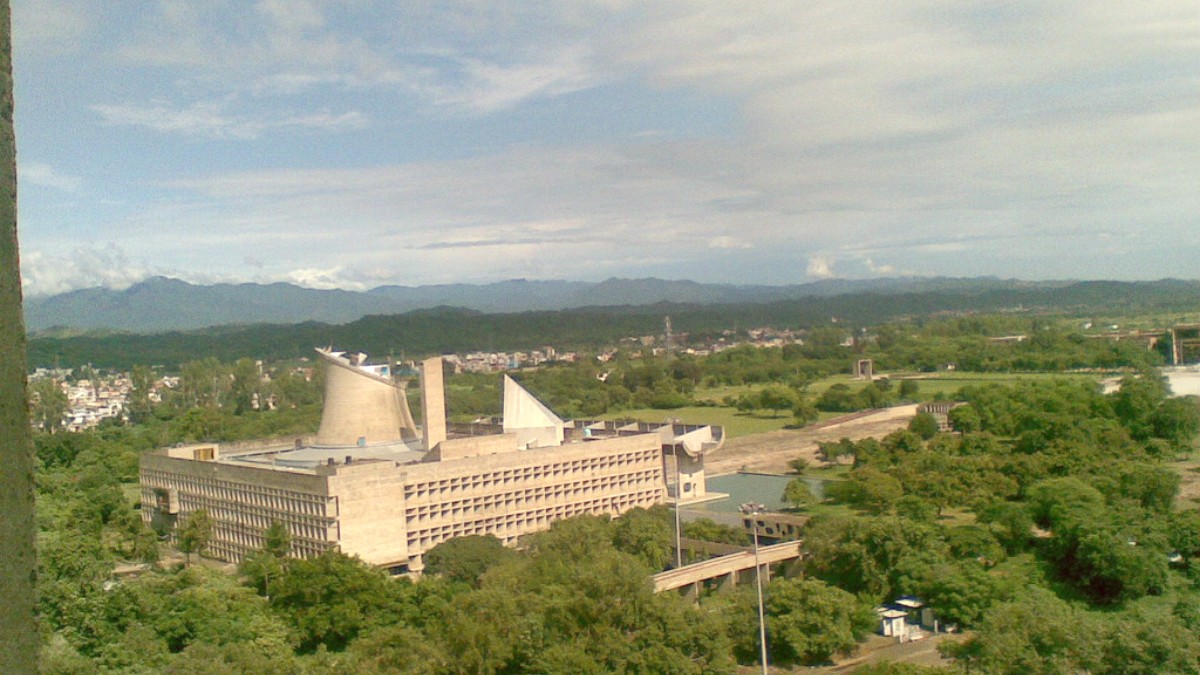
Punjab And Haryana, India
When India gained independence in 1947, Punjab was divided. Its former capital, Lahore, became part of Pakistan. India needed a new capital for its side of Punjab. Thus, Chandigarh began, a symbol of a forward-looking India. This carefully laid-out city with its green spaces and organized sectors contrasts with the organic chaos often found in older Indian cities.
The Punjabi heritage appears in the food, music, and festivals. Visitors find a blend of traditional values and modern living.
Your trip to Chandigarh has a journey through thoughtful design, lush gardens, and lively cultural encounters. It is a city that shows how planning shapes a harmonious urban environment.
Chandigarh has a strategic position at the foothills of the Sivalik mountain range, part of the outer Himalayas. This location gives the city a pleasing natural backdrop and climatic influence. It lies in northwestern India, on fertile plains that stretch from the Himalayas. The Ghaggar river flows nearby, making the region agriculturally rich. The city's elevation is approximately 320 to 365 meters (1,050 to 1,198 feet) above sea level. This slightly elevated position has some relief compared to the lower plains during certain seasons.
The city's planned layout uses its natural surroundings. Green belts and parks spread across the urban area, linking different sectors. These green spaces serve as the city's lungs, improving air quality and recreational areas. Sukhna Lake, a man-made body of water, adds to the city's scenic beauty. It also functions as a water reservoir and a popular leisure spot. The lake’s design fits seamlessly with the city's overall plan, giving a tranquil escape within the urban environment.
A starting point for journeys into hill stations like Shimla, Kasauli, and Manali.
Road and rail networks link it to Delhi, Amritsar, and Ludhiana.
Surrounding land is agricultural, with fields of wheat, rice.
The flat plains allowed for the city's rectilinear planning and grid-like structure.
Proximity to both agricultural lands and mountains gives varied landscapes.
Chandigarh's orderly grid system simplifies navigation. Streets run straight, and sectors are clearly numbered. A map or GPS assists, and the city's logical layout helps finding your way.
Foothills of the Sivalik mountain range, part of the outer Himalayas. Rivers like the Ghaggar flow nearby. Elevation: approx. 320 to 365 meters above sea level.
Green belts and parks connect sectors. Sukhna Lake adds beauty and recreational space. The lake’s design integrates with the city's plan.
Its location defines its character as a modern, green, and connected Indian city.
The story of Chandigarh starts with the Partition of India in 1947. This division created two new nations, India and Pakistan, and split the former British province of Punjab. Lahore, Punjab's historic capital, became part of Pakistan. India's side of Punjab needed a new capital, one symbolizing hope, modernity, and a break from the past.
Prime Minister Jawaharlal Nehru envisioned a city "unfettered by the traditions of the past, a symbol of the nation's faith in the future." This vision led to Chandigarh.
A new capital was needed for India's Punjab after Lahore went to Pakistan.
Swiss-French architect Le Corbusier designed the city for organization and functionality.
It symbolizes India's faith in the future and modern identity.
Le Corbusier, with Pierre Jeanneret, Maxwell Fry, and Jane Drew, began work in the early 1950s. Their design aimed for a highly organized and functional city, divided into self-sufficient sectors.
Wide, clean roads and many gardens like Rose Garden and Garden of Fragrance offer serene escapes.
Man-made lake for boating, walking, and enjoying sunrises or sunsets.
Capitol Complex showcases modernism, and the Rock Garden displays ingenuity and recycling.
People from Punjab, Haryana, and other parts of India reside here.
The city maintains a reputation for safety and cleanliness.
Travelers find friendly locals eager to share their city's pride.